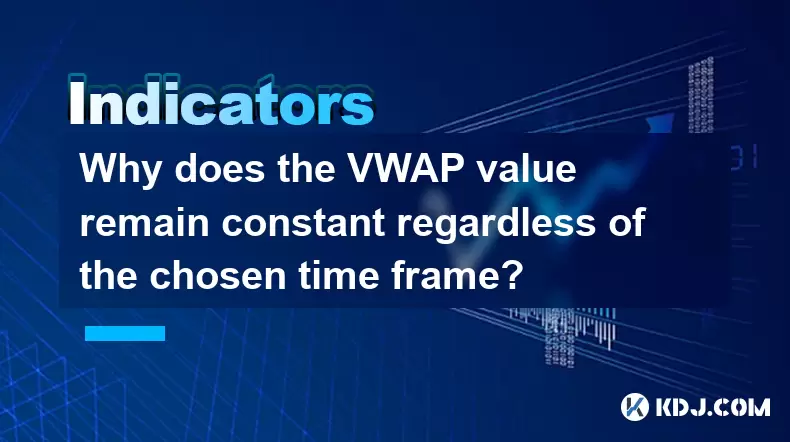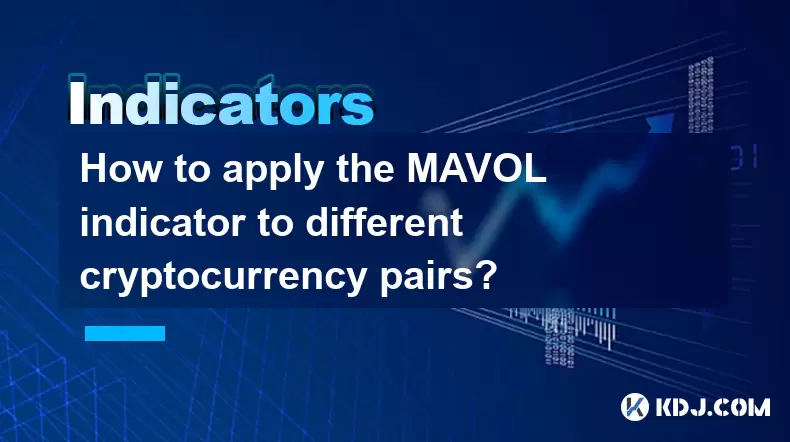-
 Bitcoin
Bitcoin $118400
0.47% -
 Ethereum
Ethereum $3836
2.20% -
 XRP
XRP $3.157
2.98% -
 Tether USDt
Tether USDt $0.9999
-0.03% -
 BNB
BNB $801.5
1.31% -
 Solana
Solana $180.9
2.07% -
 USDC
USDC $0.9999
-0.02% -
 Dogecoin
Dogecoin $0.2225
2.50% -
 TRON
TRON $0.3285
-1.02% -
 Cardano
Cardano $0.7789
2.60% -
 Hyperliquid
Hyperliquid $43.60
2.39% -
 Sui
Sui $3.892
4.41% -
 Stellar
Stellar $0.4229
3.34% -
 Chainlink
Chainlink $18.01
3.98% -
 Hedera
Hedera $0.2745
6.77% -
 Bitcoin Cash
Bitcoin Cash $582.3
3.38% -
 Avalanche
Avalanche $23.77
1.04% -
 Ethena USDe
Ethena USDe $1.001
0.01% -
 Toncoin
Toncoin $3.493
3.59% -
 Litecoin
Litecoin $110.0
2.48% -
 UNUS SED LEO
UNUS SED LEO $8.936
-0.37% -
 Shiba Inu
Shiba Inu $0.00001304
2.49% -
 Uniswap
Uniswap $9.999
1.09% -
 Polkadot
Polkadot $3.897
3.26% -
 Monero
Monero $308.6
-0.83% -
 Dai
Dai $0.9999
-0.01% -
 Bitget Token
Bitget Token $4.504
-0.04% -
 Pepe
Pepe $0.00001154
2.95% -
 Cronos
Cronos $0.1471
3.06% -
 Ethena
Ethena $0.6691
19.53%
Why does the VWAP value remain constant regardless of the chosen time frame?
VWAP calculates the average price weighted by volume since the session start, using tick-level data, so its value remains consistent across all time frames.
Jul 31, 2025 at 09:58 am

Understanding the Core Concept of VWAP
The Volume Weighted Average Price (VWAP) is a trading benchmark that calculates the average price a cryptocurrency has traded at throughout the day, based on both volume and price. Unlike simple moving averages, VWAP incorporates transaction volume, giving more weight to periods with higher trading activity. This makes it a more accurate reflection of true market sentiment during a given session. The formula for VWAP is:
VWAP = Σ (Price × Volume) / Σ Volume
Each price point is multiplied by the volume traded at that price, summed across all transactions, and then divided by the total volume. Because this calculation is cumulative and anchored to the start of the trading session, the resulting value evolves as the session progresses but remains consistent in how it's computed, regardless of the chart’s time frame.
How VWAP Calculation Differs from Other Indicators
Many technical indicators, such as moving averages or RSI, are recalculated based on the selected time frame. For example, a 14-period RSI on a 1-hour chart uses different data points than on a 15-minute chart. However, VWAP is session-based, not time-frame-based. It starts at the beginning of a trading period—typically 00:00 UTC for crypto markets—and recalculates cumulatively with each new transaction. Whether you view the chart in 5-minute, 1-hour, or 4-hour intervals, the underlying data feeding into VWAP remains the same: every trade and its associated volume since the session began.
This means that the VWAP line you see on any time frame is derived from identical transaction data. The visual representation doesn’t change because the indicator isn’t recalculated per candle; it updates based on real-time trade inputs. This is why switching from a 1-minute to a daily chart does not alter the VWAP value at a given moment—it reflects the same cumulative average.
Why Time Frame Selection Doesn’t Affect VWAP Values
When traders switch between time frames, they are altering the granularity of price candles, not the underlying transaction data. The VWAP algorithm pulls tick-level data, meaning every individual trade executed on the exchange, irrespective of how the chart is segmented. For instance:
- On a 5-minute chart, each candle aggregates 5 minutes of trades.
- On a 1-hour chart, each candle aggregates 60 minutes of trades.
However, VWAP processes each individual trade within those periods separately, not the candle’s open, high, low, close (OHLC) values. Therefore, even though the candle structure changes, the input data for VWAP—price and volume per transaction—remains unaltered. As a result, the computed VWAP at any given timestamp will be identical across all time frames.
Step-by-Step: How VWAP Is Built in Real Time
To understand why VWAP remains constant, consider how it is constructed from live market data:
- Start the session: At the beginning of the trading day (e.g., 00:00 UTC), VWAP initializes at zero.
- Record each trade: For every transaction, the system logs the executed price and volume.
- Calculate typical price per trade: Although VWAP uses actual trade prices, some implementations use the typical price (high + low + close) / 3 when tick data is unavailable, though exchanges usually provide precise trade data.
- Multiply price by volume: Each trade’s price is multiplied by its volume to get the total value traded.
- Accumulate value and volume: The system maintains a running sum of (price × volume) and a running sum of volume.
- Compute cumulative VWAP: At any moment, divide the total value traded by the total volume traded.
Because this process uses the same tick data regardless of chart settings, the output is consistent across all time frames. No resampling or re-aggregation affects the VWAP calculation.
Practical Example Across Multiple Time Frames
Imagine a cryptocurrency trading session starting at 00:00 UTC. By 12:00 UTC, total volume is 1,000 BTC, and the sum of (price × volume) is 40,000,000 USD. The VWAP at this point is:
40,000,000 / 1,000 = 40,000 USD
Now, consider viewing this data on three different charts:
- A 15-minute chart: Each candle shows 15 minutes of price action. The VWAP line updates with each new trade.
- A 1-hour chart: Candles are broader, but VWAP still uses the same trade-by-trade data.
- A 4-hour chart: The chart appears smoother, but VWAP at 12:00 UTC still reads 40,000 USD.
Despite differing visual resolutions, the VWAP value at 12:00 UTC is identical because the underlying cumulative calculation hasn’t changed. The indicator does not recalculate based on candle OHLC—it uses raw exchange data directly.
Common Misconceptions About VWAP and Time Frames
Some traders assume that changing the time frame alters all indicators similarly. However, VWAP is fundamentally different from lagging or period-based indicators. It is not a moving average that looks back over a fixed number of candles. Instead, it is a cumulative, volume-adjusted average from a fixed starting point. This design makes it inherently resistant to time frame variations. Another misconception is that VWAP resets automatically at regular intervals. While it typically resets daily, some platforms allow custom session resets (e.g., weekly VWAP), but even then, the reset point—not the time frame—determines the calculation window.
Frequently Asked Questions
Does VWAP reset at the same time across all exchanges?
No. While many platforms use 00:00 UTC as the default reset time, some exchanges or trading terminals allow users to define custom VWAP sessions. Always check your platform’s settings to confirm the VWAP start time.
Can I use VWAP on spot and futures markets interchangeably?
Yes, but only if the trading session alignment is consistent. Futures contracts may have different trading hours or rollover periods, which can affect volume accumulation. Ensure the VWAP calculation period matches the active trading session of the instrument.
Why does VWAP sometimes appear jagged on lower time frames?
This occurs due to high-frequency trading activity. On 1-minute or tick charts, large volume trades can cause sudden jumps in the cumulative average. The jagged appearance reflects real transaction dynamics, not a calculation error.
Is VWAP reliable during low-volume periods?
VWAP remains mathematically accurate, but its usefulness diminishes when volume is sparse. With fewer trades, the average can be skewed by large orders or outliers. Traders often combine VWAP with volume filters or use it primarily during high-liquidity sessions.
Disclaimer:info@kdj.com
The information provided is not trading advice. kdj.com does not assume any responsibility for any investments made based on the information provided in this article. Cryptocurrencies are highly volatile and it is highly recommended that you invest with caution after thorough research!
If you believe that the content used on this website infringes your copyright, please contact us immediately (info@kdj.com) and we will delete it promptly.
- SEC, Crypto, and On-Chain: Navigating the Regulatory Maze
- 2025-08-01 02:31:40
- Bitcoin Bullish Market: How Long Positions are Boosting the Crypto King
- 2025-08-01 02:35:33
- Visa, Stellar, and Stablecoins: A New York Minute on the Future of Finance
- 2025-08-01 01:50:50
- BCH, FET, BlockDAG: Decoding the Crypto Buzz
- 2025-08-01 01:16:37
- Conflux Token, Crypto Simplicity, and WeWake Finance: A New Era?
- 2025-08-01 01:50:50
- Dogecoin, Remittix, and Analyst Targets: Navigating the Crypto Landscape
- 2025-08-01 01:55:40
Related knowledge

What does it signify when the MACD crosses below the zero line?
Aug 01,2025 at 01:43am
Understanding the MACD IndicatorThe Moving Average Convergence Divergence (MACD) is one of the most widely used technical analysis tools in the crypto...

How does the MACD histogram show momentum?
Aug 01,2025 at 01:16am
Understanding the MACD Histogram and Its Role in Cryptocurrency TradingThe MACD histogram is a visual representation of the difference between the MAC...

What is a MACD crossover?
Jul 31,2025 at 11:52pm
Understanding the Role of Private Keys in Cryptocurrency SecurityIn the world of cryptocurrency, private keys are the cornerstone of ownership and con...

How can you use the MACD histogram to determine trend strength?
Jul 31,2025 at 11:10pm
Understanding the MACD Histogram and Its ComponentsThe MACD (Moving Average Convergence Divergence) histogram is a visual representation of the differ...

What is the impact of different moving average types (SMA vs. EMA) on the MAVOL indicator?
Aug 01,2025 at 02:31am
Understanding the MAVOL Indicator in Cryptocurrency AnalysisThe MAVOL (Moving Average Volume) indicator is a technical analysis tool used in the crypt...

How to apply the MAVOL indicator to different cryptocurrency pairs?
Aug 01,2025 at 12:43am
Understanding the MAVOL Indicator in Cryptocurrency TradingThe MAVOL indicator, short for Moving Average Volume, is a technical analysis tool that app...

What does it signify when the MACD crosses below the zero line?
Aug 01,2025 at 01:43am
Understanding the MACD IndicatorThe Moving Average Convergence Divergence (MACD) is one of the most widely used technical analysis tools in the crypto...

How does the MACD histogram show momentum?
Aug 01,2025 at 01:16am
Understanding the MACD Histogram and Its Role in Cryptocurrency TradingThe MACD histogram is a visual representation of the difference between the MAC...

What is a MACD crossover?
Jul 31,2025 at 11:52pm
Understanding the Role of Private Keys in Cryptocurrency SecurityIn the world of cryptocurrency, private keys are the cornerstone of ownership and con...

How can you use the MACD histogram to determine trend strength?
Jul 31,2025 at 11:10pm
Understanding the MACD Histogram and Its ComponentsThe MACD (Moving Average Convergence Divergence) histogram is a visual representation of the differ...

What is the impact of different moving average types (SMA vs. EMA) on the MAVOL indicator?
Aug 01,2025 at 02:31am
Understanding the MAVOL Indicator in Cryptocurrency AnalysisThe MAVOL (Moving Average Volume) indicator is a technical analysis tool used in the crypt...

How to apply the MAVOL indicator to different cryptocurrency pairs?
Aug 01,2025 at 12:43am
Understanding the MAVOL Indicator in Cryptocurrency TradingThe MAVOL indicator, short for Moving Average Volume, is a technical analysis tool that app...
See all articles

























































































